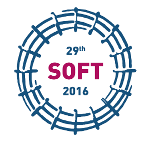Speaker
Christos Tsironis
(Electrical and Computer Engineering)
Description
The stabilization of appearing MHD modes (NTMs, RWMs) is a key factor in optimizing tokamak operation towards fusion power production. In NTM control, the primary actuator is a confluence of focused electromagnetic wave beams, which are generated by high-power millimetre-wave sources (gyrotrons), transferred through waveguides and injected into the plasma by a controlled electromechanical launcher. In connection to the design of controllers for the overall process, a useful theoretical model for the wave actuation should include, among others, the dynamics of the steerable launcher mirror, the motion transmission to the mirror by the associated servomotors, as well as the beam propagation in the transmission line and the plasma. In this work, we present fragments of the physics-based theoretical modelling involved in the control system setup: (a) We investigate the options for the manipulation of the geometry of the EC resonance layer, taking into account all the parameters amenable to external control (magnetic field, launcher angles, wave frequency) and their dynamic response, (b) We present a dynamic equivalent model for the electrical current vector and mechanical torque of the AC servomotors (instead of the commonly-used rms current model), (c) We study the closed-loop system error and settling time of the launcher mirror as a function of the system (plant and controller) parameters for different scenarios pursued in the experiment.
Co-authors
Christos Tsironis
(Electrical and Computer Engineering, National Technical University of Athens, Athens, Greece)
Iordanis K. Giannopoulos
(Automation, Technonogical Education Institute of Piraeus, Piraeus, Greece)
Soultana Vasileiadou
(Automation, Technonogical Education Institute of Piraeus, Piraeus, Greece)

